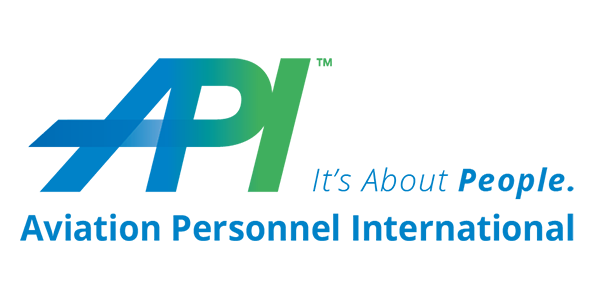In December 2017, I participated in NBAA’s Workforce Summit and was recently quoted in NBAA’s Jan/Feb issue of the Business Aviation Insider. In the article, “Expand Your Talent Base Through Diversity,” the author discusses the pilot shortage as well as how our American workforce demographics are changing.
The article goes on to share how important it is that we in the business aviation industry put diversity front and center.
Because we’re already so far behind the eight-ball.
Since hiring for diversity is so top-of-mind for us at API, I’d like to highlight various aspects of the issue and how it affects our industry
Why Diversity Matters Now
So just why is diversity—and its counterpart, inclusion—so important?
For starters, our industry predominately made up of heterosexual white males. Most flight departments do not reflect the make-up of their host organizations. And, the outlook is bleak when you take a look at the statistics.
For starters, women make up only five percent of the aviation workforce, a statistic that virtually hasn’t changed in 50 years. We’re one of the only industries that hasn’t grown its percentage of women.
Another reason diversity matters is that corporations want—and often require—diverse work cultures. And this cascades down to flight departments.
As many of you have experienced, your HR teams are placing a heavy emphasis on hiring diverse candidates. In fact, NBAA’s article suggests that 83 percent of the Fortune 500 have non-discrimination policies toward ethnicity, sexual orientation and gender identity.
Understanding Diversity and Inclusion
Just what does human resources really mean when they want an aviation director to focus on diversity?
The HR professionals at the University of California at Berkeley offer the following description:
“When people think of diversity, they may think first of ethnicity and race, and then gender; however, diversity is much broader than that . . . diversity is defined as ‘otherness or those human qualities that are different from our own and outside the groups to which we belong, yet present in other individuals and groups.’”
The UC Berkeley people go on to say that accepted dimensions of diversity include, but are not limited to age, ethnicity, ancestry, gender, physical abilities/qualities, race, sexual orientation, educational background, geographic location, income, marital status, military experience, religious beliefs, parental status and work experience.
So, as you can see, the definition is as multifaceted and inclusive as the very idea of diversity itself.
Bringing on diverse talent is one thing, but do these employees feel like they fit in? And, are you able to retain them?
I particularly appreciated this perspective from a 2017 Fortune magazine article:
“Diversity gets people into the room, but inclusion keeps them there. True diversity is about more than just numbers; it must come with a heavy dose of inclusion. That means a company must be intentional about creating and fostering a culture where everyone has a seat at the table, not just entry to the room to watch as a bystander.”
As I’ve said many times, you shouldn’t hire an individual simply because he or she brings diversity, writ large, but it’s important to be open to it when it’s brought to the table.
How to Start Hiring for Diversity
- Start at the top. In other words, as an aviation leader, you need to promote diversity and open-mindedness through your own behavior and actions. Encourage others to network and recruit from within the communities outside of their personal connections. This will have a trickle-down effect among your team.
- Emphasize the company’s workplace non-discrimination policy and privacy policy. Explain your best-practices externally, via recruiting efforts and internally, via onboarding and ongoing training programs.
- Expand the workforce by looking outside of normal referral networks. Support, network and recruit (or mentor professionals) in organizations that run professional development programs, such as Women in Corporate Aviation, Women in Aviation, and the Organization of Black Aerospace Professionals (OBAP).
- Alter the recruiting process to be more inclusive. Add more professionals into the process and remember to be open-minded and cognizant of “unintentional bias.”
- Help remove obstacles that hinder diverse candidates. One such obstacle to inclusivity is unconscious bias during the hiring process.
- Challenge toxic attitudes. People in leadership positions must be proactive when it comes to confronting discrimination or harassment in the workplace. “Effective managers might have to say, ‘If that’s the way our pilots are, then maybe they’re not the pilots for us.”
- Offer “quality of life” scheduling opportunities. Flexible work hours and set schedules will attract female pilots and flight attendants who may have children. Be mindful of benefits to help attract potential employees, particularly younger women who are balancing careers with raising their families. This is an area where you can provide meaningful advantages, compared to the commercial airlines, and make our industry more appealing for young people of both sexes.
- Start a reverse-mentoring program. This involves younger professionals mentoring more tenured professionals–even at the top levels—with the goal of helping them “understand various perspectives that they may not otherwise.”
- Reach out to younger generations. Provide them opportunities to explore the variety of careers within aviation. You can refer to Jennifer Steele’s blog series for further ideas.
- Involve employees in the decision-making process. “Give employees confidence by empowering them to come up with solutions,” said JD McHenry, president and CEO of Global Jet Services, Inc. Include more open-minded professionals in the hiring process to help reduce unintentional bias.
Benefits of a Diverse Workforce
The facts are indisputable: in any workplace, being around people who are different from us makes us more creative, more diligent and harder-working. On the job, diverse teams are more effective than homogenous teams.
When you can summon different perspectives, cultures and backgrounds to any task, granted, you’ll probably end up with a number of solutions, but that is the very backbone of innovation.
But recruiting for diverse talent is often difficult.
Speaking from experience, one of the biggest challenges to creating diversity is the equal challenge of having diverse people prepare themselves for our industry. The level of diversity among licensed air transport pilots and A&Ps, for example, has not seen any significant growth in the last 15 years.
Truly, there is no “silver bullet” for bringing larger numbers of diverse people into our industry. But there are many practical ways that aviation organizations can take action.
Even as companies reach out to what they hope will be the next generation of aviation professionals, they must still address short- and medium-term personnel issues. Embracing inclusivity is not a fix-all, but it has the potential to expand companies’ talent bases and meet current workforce needs.
Again, as I’ve said, you shouldn’t hire an individual just because they bring diversity, but it’s important to be open to diversity when it’s brought to the table.
Want to read NBAA’s original article?
Here are three ways:
- Download the Business Aviation Insider Mobile App to your smart devices.
- Go to NBAA.org and download the Jan/Feb 2018 issue in the archive.
- Grab a printed copy of the Jan/Feb issue of Business Aviation Insider, which is mailed to NBAA members.


This is a well-written, informative post that is very timely as business aviation faces the talent shortage. Demographics in the U.S. are changing and to attract the best talent, flight departments will need to change their approach to hiring. Hiring managers (particularly when hiring for pilots) often say they want someone they’ll be comfortable with on the road for days at a time. After more detailed conversation, it comes to the surface that they want someone who thinks, acts (and looks) like them. As Sheryl notes, diverse backgrounds and perspectives can strengthen the team.
A final thought to ponder on this subject: “Diversity is being invited to the party. Inclusion is being asked to dance.” a quote attributed to Verna Myers, a recognized expert on diversity and inclusion.
Thanks Mike. After being at yesterday’s Inaugural General Aviation Women’s Leadership Forum in Boca Raton, sponsored by IAWA, the International Aviation Women’s Association, the power of diversity is really awesome. It was interesting to hear the stories of gaining “a chance to dance” as you pointed out in your comments.